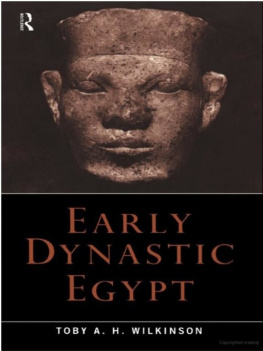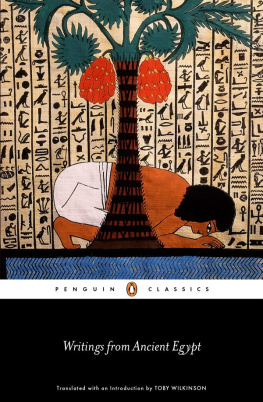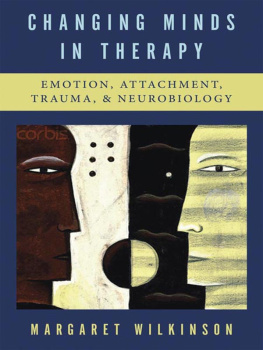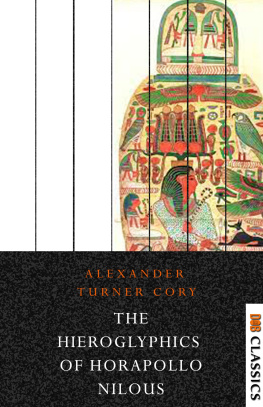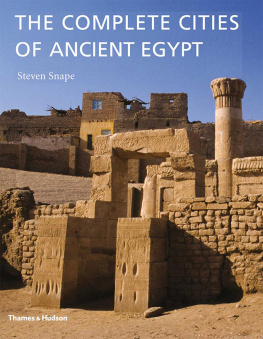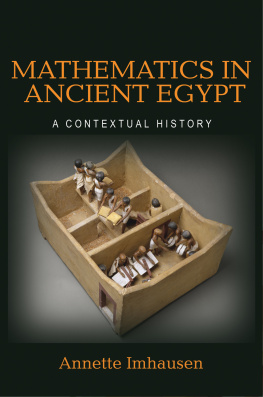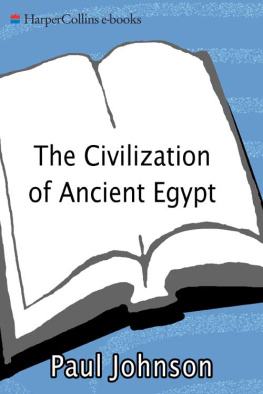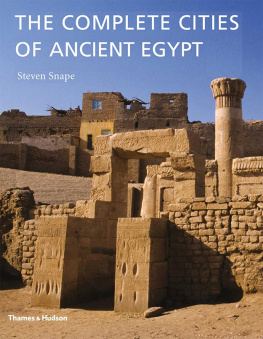EARLY DYNASTIC EGYPTEARLY DYNASTIC EGYPT Toby A.H.Wilkinson London and New York First published 1999 by Routledge 11 New Fetter Lane, London EC4P 4EE Simultaneously published in the USA and Canada by Routledge 29 West 35th Street, New York, NY 10001 Routledge is an imprint of the Taylor & Francis Group This edition published in the Taylor & Francis e-Library, 2005. 1999 Toby A.H.Wilkinson All rights reserved. No part of this book may be reprinted or reproduced or utilised in any form or by any electronic, mechanical, or other means, now known or hereafter invented, including photocopying and recording, or in any information storage or retrieval system, without permission in writing from the publishers. British Library Cataloguing in Publication Data A catalogue record for this book is available from the British Library. Library of Congress Cataloguing in Publication Data Wilkinson, Toby A.H. Early Dynastic Egypt/Toby A.H.Wilkinson p. cm. Includes bibliographical references (p.378) and index. 1. EgyptHistoryTo 332 B.C. I. Title DT85.W49 1999 932.012dc21 9835836 CIP ISBN 0-203-02438-9 Master e-book ISBN ISBN 0-203-20421-2 (Adobe e-Reader Format) ISBN 0-415-18633-1 (Print Edition) For BenjaminCONTENTS List of plates List of figures Prologue Acknowledgements PART I INTRODUCTION
- PART IITHE ESTABLISHMENT OF AUTHORITY
- PART IIITHE DIVERSITY OF LOCAL EXPERIENCE
Epilogue Glossary Bibliography Index
PLATES
- The Umm el-Qaab at Abydos
- Mastaba K1 at Belt Khallaf
- The Early Dynastic cemetery at Tarkhan
- An lite First Dynasty tomb at North Saqqara
- The Early Dynastic necropolis at Helwan/el-Maasara
- Tell el-Farain
- Abu Rawash
- King Ninetjer
- The emblem of the Sed-festival
- Palace-facade architecture, 2
- The tomb of Qaa
- The unfinished step pyramid complex of Sekhemkhet at Saqqara
8.1 Markers of the royal cult
FIGURES
| Map 1 | Map of Egypt and Nubia showing sites mentioned in the text |
| Map 2 | Map of the Near East showing sites mentioned in the text |
| Chronological chart of the late Predynastic and Early Dynastic periods |
| 2.1 | Early centres of kingship |
| 2.2 | Trade, ownership and power |
| 2.3 | Kings before the First Dynasty |
| 3.1 | Rulers of the First Dynasty: contemporary lists |
| 3.2 | Royal annals |
| 3.3 | Year label of Semerkhet |
| 3.4 | Ephemeral rulers, 1: Weneg and Nubnefer |
| 3.5 | The Third Dynasty: a problem solved |
| 3.6 | Ephemeral rulers, 2: Khaba |
| 4.1 | Royal domains |
| 4.2 | Estates |
| 4.3 | The treasury and its functions |
| 4.4 | Taxation |
| 4.5 | The titles of the vizier |
| 4.6 | The structure of Early Dynastic administration |
| 5.1 | Campaigns against southern Palestine |
| 5.2 | Activity in Egypts desert margins |
| 5.3 | Campaigns against Nubia |
| 6.1 | The staff of office |
| 6.2 | The red crown |
| 6.3 | The white crown |
| 6.4 | Standards on early royal monuments |
| 6.5 | The Two Ladies |
| 6.6 | Hunting the hippopotamus |
| 6.7 | Year labels |
| 6.8 | Palace-faade architecture, 1 |
| 7.1 | The royal cemetery at Abydos |
| 7.2 | The royal cemetery at Saqqara |
- Depictions of deities
- Human sacrifice
- Divine images
- Royal cult statues
- Early Dynastic cult dedications
- The goddess Mafdet
- Festivals involving a divine bark
- Early Dynastic shrines and temples
- Early cult at Buto, 1: the sacred bull
- Early cult at Buto, 2: the Djebaut shrine
9.1 Elkab
- Map of the Hierakonpolis region showing sites mentioned in the text
- Map of the Abydos region showing sites mentioned in the text
- Map of the Memphite region showing sites mentioned in the text
PROLOGUEAncient Egypt holds a unique fascination. No other civilisation of the ancient world has such popular appeal, none is as significant for the history of human society and its organisation. The valley of the River Nile witnessed the worlds first example of that enduring and now omnipresent political structure, the nation state. Today, practically the entire land surface of the earth is divided among nation states, which number nearly two hundred. But the origins of this phenomenon go back five thousand years, to the formation of a unified territory and government in Egypt. Moreover, that government, centred on the royal court and the person of the king, succeeded in creating and promoting an lite culture which expressed itself on a grand scale. Hence, ancient Egyptian civilisation has left an unparalleled series of monuments to allure and intrigue countless generations of visitors.The pyramids of the Old Kingdom are perhaps the most remarkable, and certainly the most captivating, of Egyptian monuments. Those at Giza were hailed as one of the wonders of the ancient world; to modern eyes they are perhaps the quintessential symbol of the ancient Egyptians extraordinary creativity and craftsmanship. Yet the cultural and political developments which led to the construction of the pyramids have been comparatively neglected. Without central control of the economy, the royal court would not have had the resources to engage in monumental building projects. Without the ability to command the necessary manpower, the pyramids could not have been raised. Without the religious and ideological motivation, the construction of huge funerary monuments would, quite literally, never have got off the ground. All these prerequisites for pyramid-building have their roots in the Early Dynastic period. Hence to understand the most potent symbols of ancient Egypt, we must look at what went before. Five hundred years separate the birth of the Egyptian state and the erection of the pyramids. This half-millennium constitutes the formative period of civilisation in the Nile valley, when Egypts early kings developed the mechanisms of rule and the lite culture that were to characterise their country for the next three thousand years. This crucially important formative stage is the subject of the current work.The chapters that follow seek to explain not only the background to the formation of the Egyptian state, but also the means by which its early rulers controlled the people, the land and its resources. Central authority, however, is only one side of the coin. At all periods, Egypts governing lite strove to convey the impression that the nation was unified politically and culturally, that all its institutions revolved around the king and took their lead from the royal court. The true picture is rather more complex: in reality, local and regional concerns were important, and often had a direct impact on the pace and direction of change. Egypt was never a monolithic state, despite the wishes and protestations of its rulers. The current work addresses this interesting question, examining the character of Early Dynastic Egypt at the provincial level.The evidence for local and regional variation is by no means straightforward; but here, as elsewhere in the study of early Egypt, recent scholarship has led to major advances inunderstanding. Indeed, research into the formative period of ancient Egyptian civilisation has intensified exponentially over the past thirty years. The re-evaluation of material from old excavations has been accompanied by dramatic new discoveries. Record numbers of archaeological expeditions have been concentrating their efforts on illuminating the remotest periods of Egyptian history, and in particular the processes which led to the formation of the Egyptian state. As a result of this new information, a comprehensive study of the Early Dynastic period can now be attempted for the first time.Early Dynastic Egypt has traditionally suffered from being squeezed between two, more obviously glamorous, neighbours. On the one hand, the prehistoric origins of ancient Egypt and the unification of the country at the beginning of the historic period have intrigued scholars, attracting much comment and debate. On the other hand, the glories of the pyramid age, combined with a wealth of artistic and written evidence, have given the Old Kingdom an undeniable appeal for professionals and public alike. While the Predynastic period and the Old Kingdom have been intensively studied, the intervening phase of Egyptian historythe Early Dynastic periodhas been comparatively neglected. The current work seeks to redress the imbalance, giving the first three dynasties the attention they deserve as a period of great innovation and lasting importance, a period, moreover, which paved the way for the familiar glories of ancient Egypt.This book is arranged in three parts. Part I forms an introduction to the study of Early Dynastic Egypt. The re-discovery of Egypts remote past, although very much a feature of the last three decades, began more than a century ago. A long line of distinguished archaeologists and scholars have added pieces to the puzzle, although the picture is by no means complete. Chapter 1 tells the extraordinary story of how Egypt before the pyramids, once an obscure dark age, has emerged from the shadows into the spotlight of academic inquiry and popular interest.The formation of a unified state marks the beginning of Egyptian history and this pivotal development is examined in detail in Chapter 2. The roots of the process lie far back in prehistory, in the period called Predynastic (that is, before the dynasties). Southern (Upper) Egypt was the heartland of social change, since it was here that hierarchies and social divisions based upon inherited status first developed. During the second half of the fourth millennium BC, political and economic power came to be concentrated in the hands of a few ruling lites. Advances in technology and an intensification of trade benefited some centres more than others, and at these favoured sites the local rulers began to adopt the trappings of royalty. As these trends accelerated, Egypt was transformed and a nation was born.The five centuries which followed comprise a fascinating period of Egypts history, but one which is all too often glossed over in standard books on the subject. Chapter 3 presents the first ever, detailed, reign-by-reign account of the period, drawing on the results of the latest research by an international community of experts. The discussion includes an evaluation of the historical sources for the first three dynasties, and examines the splendid achievements of Egypts early kings.With Part I, the scene is thus set for an in-depth analysis of Early Dynastic Egypt.The dominant themes of early Egyptian civilisation are examined in Part II, which forms the core of the book. Subtitled The establishment of authority, Part II analyses thevarious mechanisms by which Egypts early rulers first developed and then exercised authority over a newly unified country. The word establishment has been deliberately chosen for its dual meaning: the setting up of an ideology of rule, and the institutional structures by which this ideology was put into effect. The most obvious facet of the establishment is the administration, the governmental apparatus which allowed the royal court to supervise and control Egypt and its resources. Very little has been written about early Egyptian administration, mainly because the source material is fragmentary and difficult to interpret. However, a close look at the surviving evidence for administrative practices indicates thatin ancient Egypt as in countries todaycontrol of the economy lay at the heart of the governments activities. The court itself comprised a bewildering array of officials, and there are tantalising glimpses of how political power was exercised at this earliest period of Egyptian history. Of course, control of the national economy was dependent upon control of the various provinces; provincial government seems to have developed initially as an adjunct to economic supervision, later taking on a life of its own (as the history of the Old Kingdom demonstrates). Chapter 4 examines all these aspects of Early Dynastic administration, and seeks to draw a coherent picture of how early Egypt was governed.Egypt was not alone in the ancient world. To the north and south were other lands and cultures, and contact with them was unavoidable. If the continued supply of commodities to the court lay at the heart of Egyptian administration, it also formed the backdrop to early Egypts foreign relations. In its quest for raw materials and prestige goods, the royal court had to look beyond the Nile valley to the adjoining desert regions and other lands further afield. The desire to gain access to trade routes with Palestine and Nubia may have been a key factor in the process of state formation. Once Egypt had been unified, mere access to foreign imports was no longer sufficient: direct control of foreign trade or of the commodity sources themselves became both desirable and feasible. Economic interest provided grounds for political expansionism. There is evidence that Early Dynastic kings launched military campaigns against neighbouring lands, and the motive is likely to have been largely economic, even if such activities were dressed in a cloak of ideology. Egypts foreign relations during the Early Dynastic period highlight both the concerns of the early state and the ways in which these affected, and were affected by, the geo-politics of the wider region. The complex interaction between the Nile valley, Egypts desert margins, and neighbouring lands is discussed in Chapter 5.In order to control Egypt and its people, the early kings followed a number of different strategies. Together with the overt political and economic control attested in administrative records, more subtle psychological means were deployed to ensure the loyalty and subservience of the population. Perhaps the most powerful and pervasive ideology in ancient Egyptian culture was the ideology of divine kingship: the belief that the king was the earthly incarnation of the supreme deity, a channel of communication between the divine and human spheres, and the unifying force that held Egypt together, without whom chaos would ensue. Such an ideology obviously suited the system of government since it ensured strong support for the status quo and made any return to the political fragmentation of the Predynastic period unthinkable. Divine kingship is often cited as the defining characteristic of ancient Egyptian civilisation. Yet its success and longevity as an ideology of rule owes much to the efforts of the Early Dynastic kings, who formulated and promoted it. The origins and early development of this mostfundamental aspect of Egyptian culture are explored in Chapter 6. The nature of early kingshiphow the rulers saw themselves and their officecan be gauged from a variety of sources, in particular the names and titles adopted by successive monarchs, and the activities deemed worthy of record in the royal annals. The means by which kingship ideology was promulgated are equally fascinating. They included a repertoire of symbols (iconography) which became indelibly associated with royal authority, and whose preponderance in official art constantly reinforced the message that Egypt depended on the king for its well-being. Ceremonies and rituals provided the early Egyptian kings with carefully controlled, symbolically charged occasions on which they could demonstrate their legitimacy and authority. Finally, the potency of architecture to express ideas of status was appreciated from an early stage. Through the development of an explicitly royal architectural style the Early Dynastic kings sought to secure their position by appealing to the Egyptian psyche.The concern to provide for life after death is one of the best known aspects of ancient Egyptian civilisation. To it is due such characteristic features as mummies and pyramids. The most impressive monuments to have survived from Early Dynastic Egypt are the funerary structures built for the kings and their relatives. The development of the royal tomb, leading eventually to the concept of the pyramid, is explored in Chapter 7. The changes in the form of the royal burial over the course of the Early Dynastic period reflect not only advances in architecture and building technology, but also changes in the concept of the afterlife. Moreover, as the most important project of a kings reign, the royal tomb can tell us much about the self-image and public portrayal of kingship.Religion plays an important role in most societies and early Egypt was no exception. The bewildering array of cults so characteristic of pharaonic Egypt was a feature of religious life in the Nile valley from the beginning of Egyptian history. Numerous gods and goddesses are attested from Early Dynastic Egypt, together with religious festivals and other cultic activities. Chapter 8 presents the evidence for early Egyptian religion, and examines the way in which religion was manipulated by the royal court for its own ends. The concerns of the individual and those of the state rarely coincide where interaction with the divine sphere is involved. Nothing illustrates the divide between the early Egyptian state and its subjects better than temple building: whilst care was lavished on a few, nationally significant, temples, local shrines received little or no state attention. An analysis of religion in the first three dynasties highlights the tension between rulers and ruled: a tension that Egypts first kings sought to contain, and which forms a central theme of the current work.Tombs and temples are certainly impressive and informative, but they tell only part of the story. To get to the heart of Early Dynastic Egypt, to understand life in the Nile valley and how it developed, we must escape the alluring world-view promoted by the court and look instead at individual communities and regions. This is the focus of Part III, which seeks to provide a counterbalance to the court-centred culture so dominant in books about ancient Egypt. The growth of urban communities marks an important stage in the history of human society. The process of urbanisation in Egypt is particularly instructive as it seems to reflect local and regional factors more than centrally inspired policies. In recent years the number of settlements excavated in Egypt has increased markedly. Chapter 9 discusses the evidence for early urbanism, pointing out the factors which influenced the development of each community.This leads on to the final chapter of the book, which stands back and takes a regional view of developments in Early Dynastic Egypt. Much of the history of Egypt is the history of its regions. Particular combinations of natural and strategic advantages favoured some parts of the country over others; the interplay between regions affected the development of Egyptian society as a whole. Chapter 10 seeks to explain why some areas prospered during the first three dynasties while others declined; for in the answers to such questions lies the history of Egypts formative period.ACKNOWLEDGEMENTSPlate 3.2 is reproduced with the kind permission of the Committee of the Egypt Exploration Society.This book could not have been written without the assistance, support and encouragement of many individuals.First and foremost, my thanks are due to Christs College, Cambridge, which, in awarding me the Lady Wallis Budge Junior Research Fellowship in Egyptology, provided generous financial support for the four years of research and writing which went into this book. I should like to express my gratitude to the Managers of the Lady Wallis Budge Fund; to the Research Fund Managers and the College Council of Christs College for further financial support; and not least to the late Sir Ernest Alfred Thompson Wallis Budge himself, one-time scholar of Christs College, for the generosity and foresight which have so benefited British Egyptology in the six decades since his death. Christs has also provided the perfect environment in which to live and work, for which everyone in the Collegethe Master, former Master, fellows, staff and studentsdeserves my heartfelt thanks.My research into the early periods of ancient Egyptian civilisation has benefited greatly from discussions with a number of colleagues. For their unfailing interest in my work, their help and encouragement, I should like to thank Cambridge Egyptologists Barry Kemp, John Ray, Janine Bourriau, Dr Eleni Vassilika, Dr Kate Spence and Will Schenck. Kate Spence also drew the excellent illustrations which accompany the text. Other scholars have given generously of their time to provide advice and information: Barbara Adams, Nicole Alexanian, Professor John Baines, Dr Stan Hendrickx, David Jeffreys, Dr Christiana Khler, Ian Mathieson, Dr Stephan Seidlmayer and Ana Tavares. Many distinguished experts were kind enough to read and comment on the first draft of this book: Dr Edwin van den Brink, Dr Stan Hendrickx, Barry Kemp, Dr Geraldine Pinch, Dr Stephen Quirke, Dr Kate Spence and Dr Jeffrey Spencer. I should like to express my profound thanks to all of them for their insightful comments and suggestions which have contributed immeasurably to the final form of the work. Any errors or omissions remain, of course, the authors sole responsibility.Finally, I owe a great debt of gratitude to all my family and friends, without whose love, friendship and encouragement this book could not have been written. I should like to single out the chapel choir of Christs College, Cambridge which has, over the years, provided the perfect antidote to academic research. For their unwavering support, I offer my special thanks to Cathy, Duncan and Sarah, Hilary, John, Nicki, Parshia and Sin. My greatest source of inspiration has undoubtedly been my nephew, Benjamin, and it is with love and pride that I dedicate this book to him.NOTEThose words in bold throughout the text can be found in the glossary at the end of the book.
 Next page
Next page Next page
Next page
